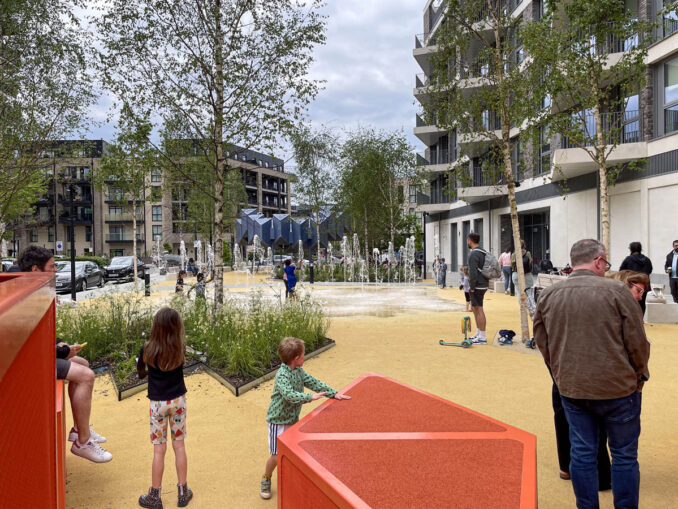
A hidden gem
Plot 5 in East Village, is a vibrant public space in Stratford (London), UK . Its playful character is a true magnet for visitors and residents in this new residential neighborhood. The space stretches between the building blocks as a side track, but it remains significant in the urban development.
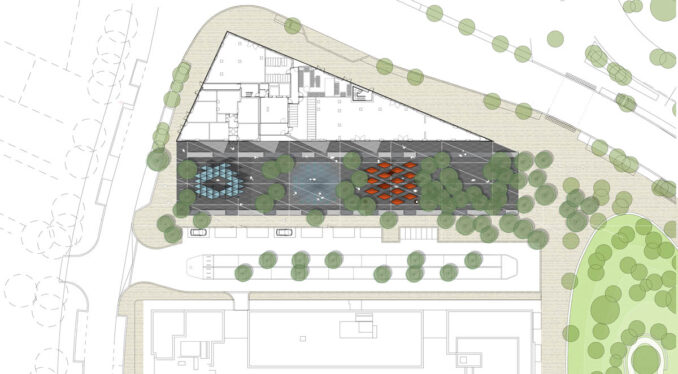
A dialogue of changing activities
Carve designed the public realm as an open and accessible ‘shared space’. It is active and stimulates interactions. The zones are defined by ‘informal boundaries’ such as seatings and concrete edges that allow the outline of the space without creating any physical barrier.
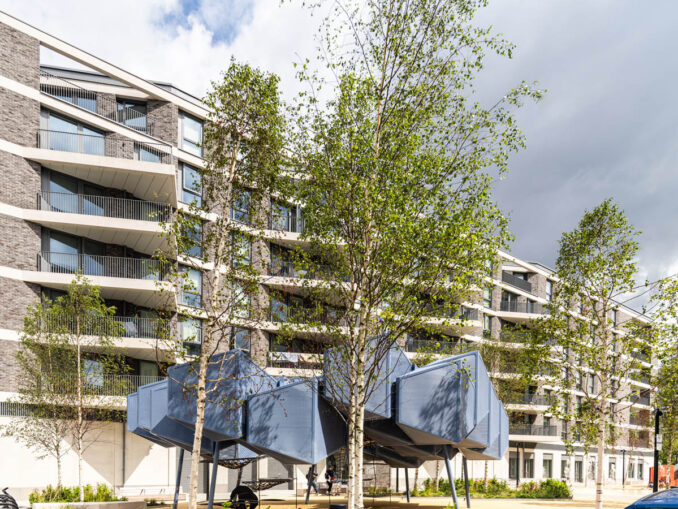
The captivating triangular shape of the adjacent building inspired the creation of a regular pattern, which serves as the foundation for our design. The argyle-base pattern (obtained from combining two triangles) seamlessly integrates the play zones, the pedestrian space, and the building itself.
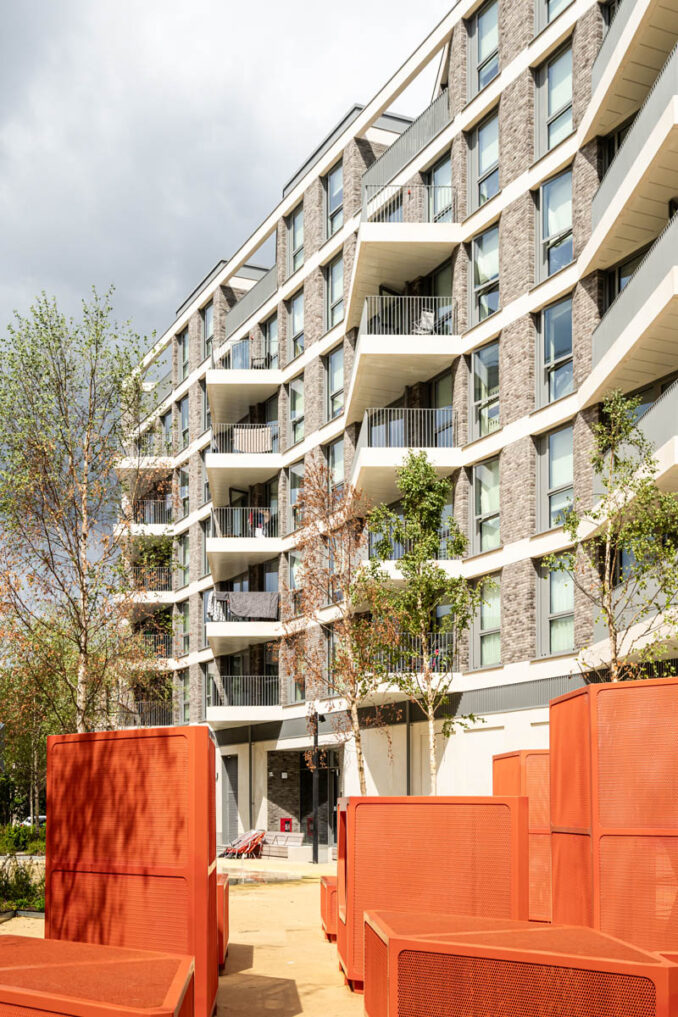
Hills and clouds
Plot 5 exists out of “Hills” and “Clouds”; It is a sequence of spaces that allows everyone to be involved in the play experience.
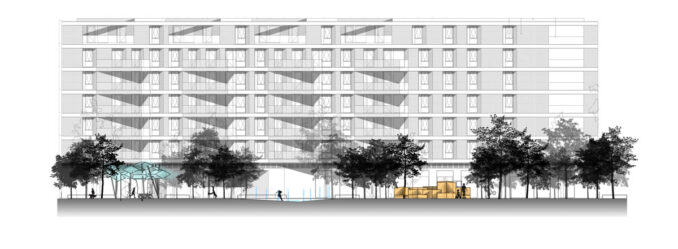
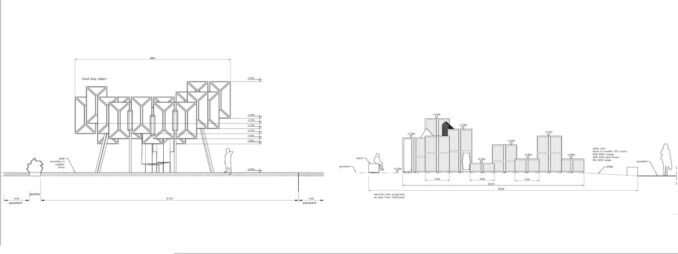
The ”Hills” are constructed from coral-red blocks, forming an adventurous hide-and-seek maze. Children can explore different routes in between, climb up for a lookout, or crawl through to hide from their friends.
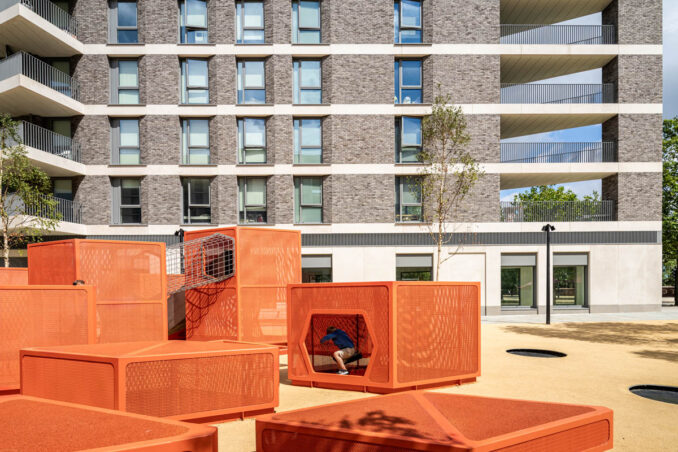
The “Cloud” is a 4-meter-tall light blue structure that hovers above the ground. It is composed of different modules, creating multiple routes to be discovered. It challenges older kids to climb up and find lounging spots to observe their friends from above through its semi-transparent skin.
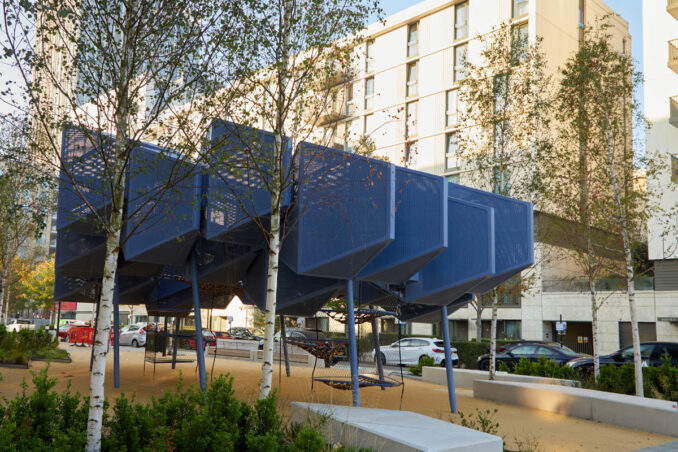
The blocks have simple forms that lead children to play with an “open function” and stimulate their imagination and narrative. We intentionally create play spaces that avoid individual and definitive meanings.
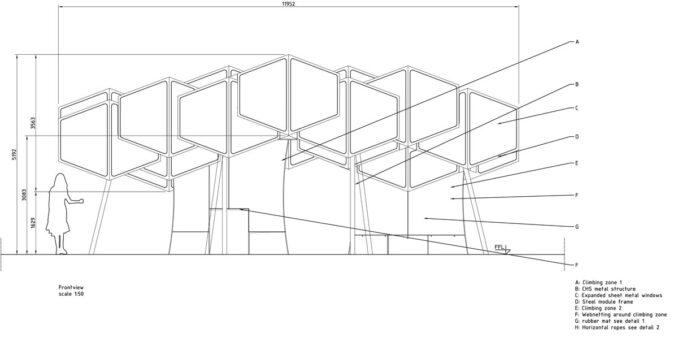
Materials
The argyle blocks are made of perforated metal sheets, which ensures a light-weight appearance for the structure and a semi-transparent look. Children can enjoy being in their own world while being easily supervised from the outside.
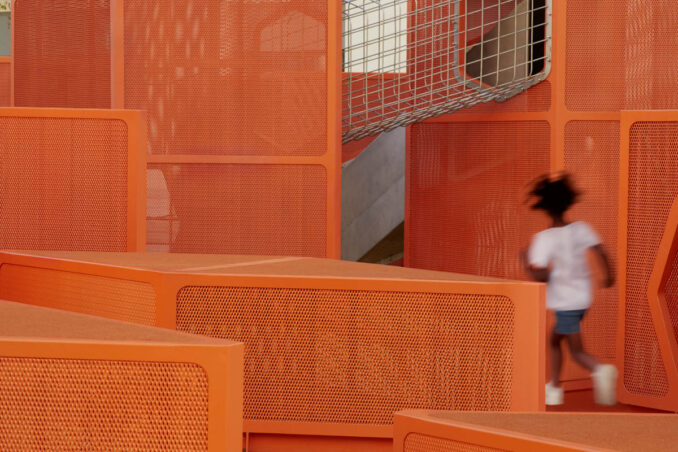


Colourful hints
The play zones stand out for their coral-red and light blue tones, which relate to the surrounding facades of the buildings. The colours are bright and can reflect the city background, creating a striking contrast with London’s often overcast skies.
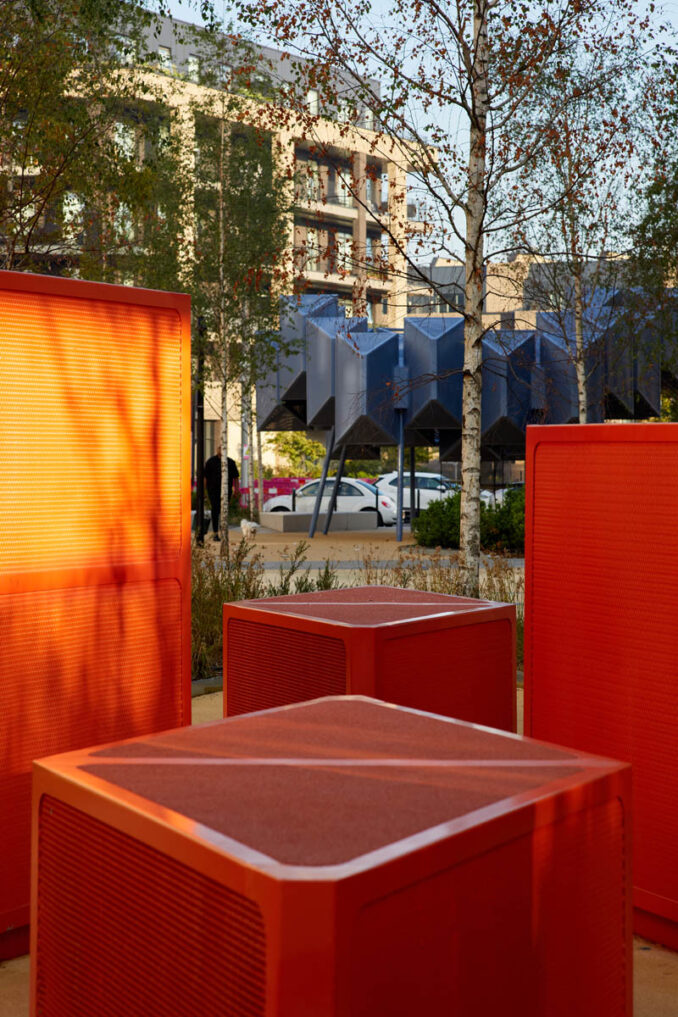
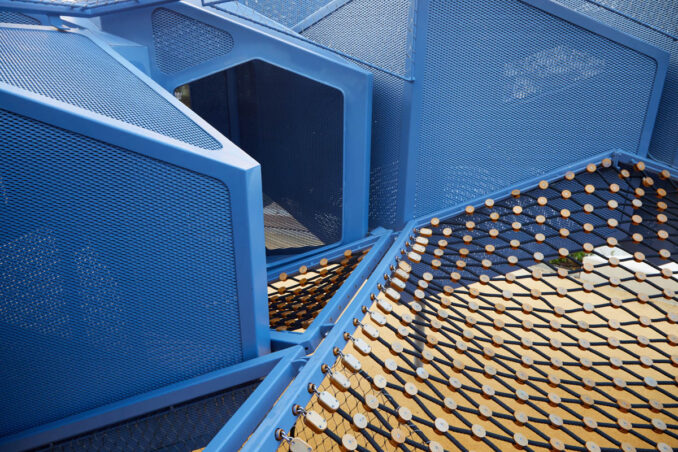
Interlinking nature
There are 50 new trees providing shade and areas of evergreen and herbaceous planting providing a splash of colour throughout the seasons. At first glance, the trees might appear to break the argyle pattern, but they are perfectly integrated into it. As we approach the terrace zone, the green carpet becomes denser. The tree species selected for Plot 5 harmonize with the ones of the nearby Victory Park, creating a continuous green link.
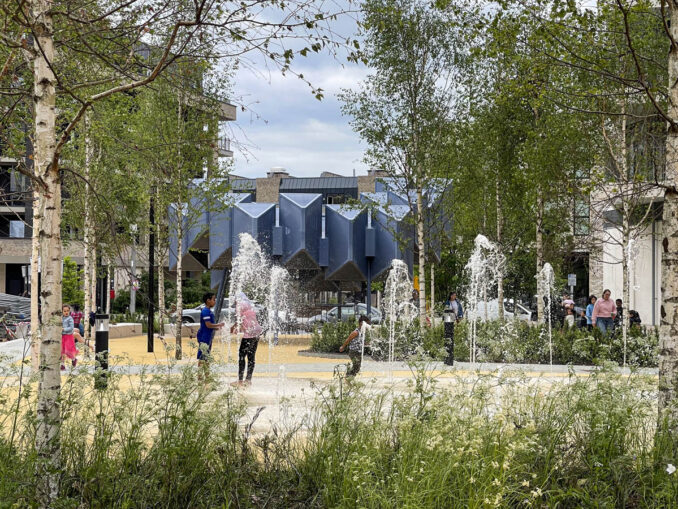
Unconventional play
Instead of relying on typical playground equipment, which can often be prescriptive and rigid in dictating how to play, the design approach leans toward creating playable landscapes. These may consist of compact spaces or objects that have the flexibility to take on various meanings depending on the time, users, and ever-changing conditions.
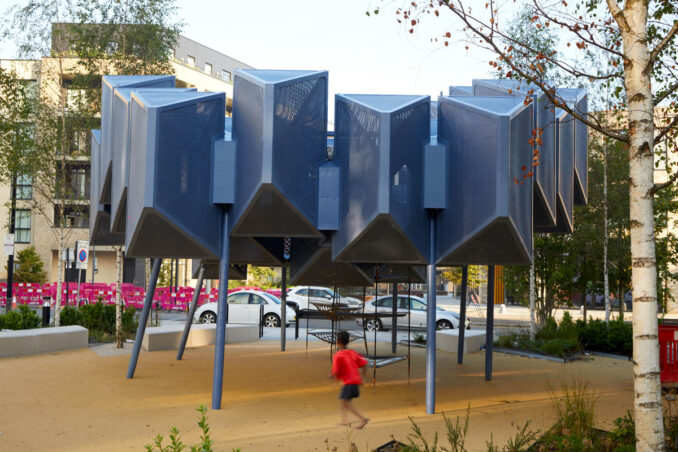
A large city like London aims to design welcoming and engaging areas to spark play and foster users to discover all the affordances. Aspiring to create places where residents are drawn to spend time and connect with their neighbors outdoors.
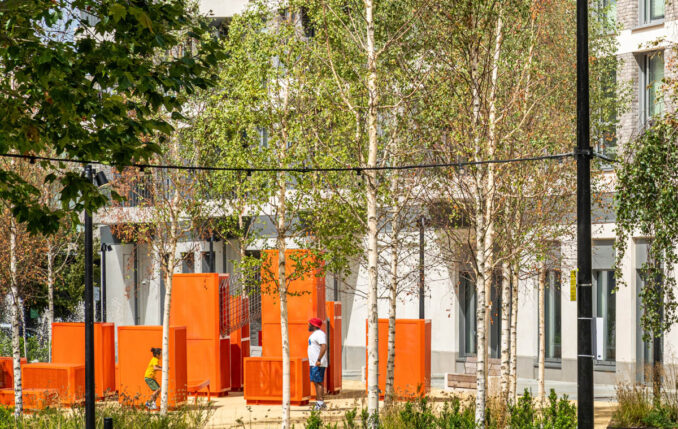
“For us, the Plot 5 play space is a crossing field among community spaces, serving the functions of public space and representing a non-standardized play area.”
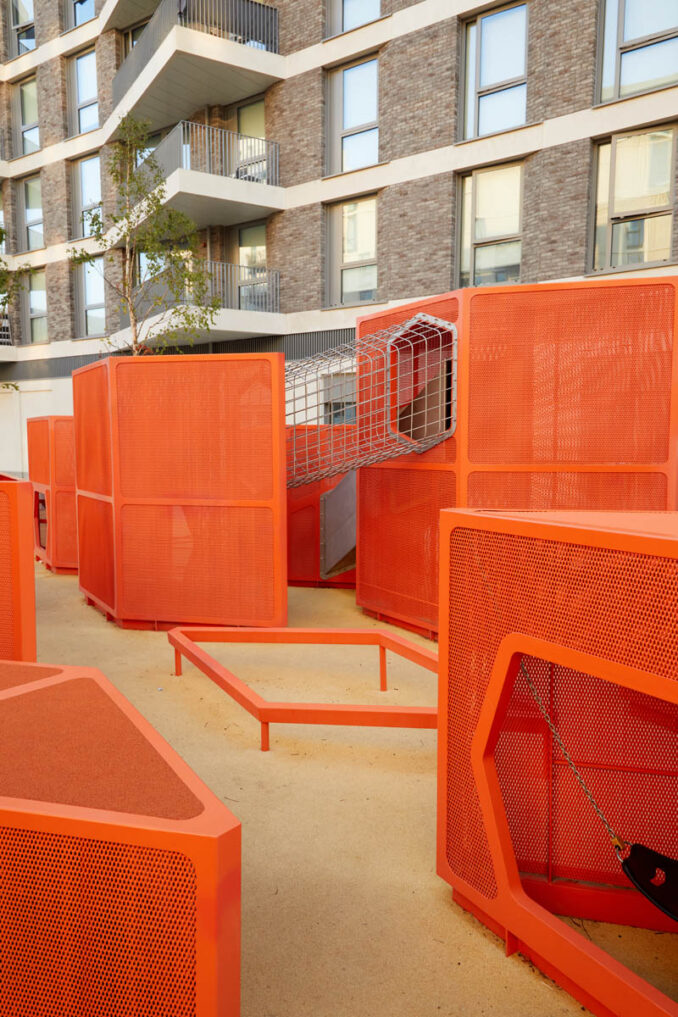
Plot 5 Play space
Location: Liberty Bridge Rd, East Village, London, UK
Designer: Carve in collaboration with Townshend Landscape Architects
Carve team: Elger Blitz, Mark van der Eng, Jasper van der Schaaf, Hannah Schubert, Thomas Tiel Groenestege, Henry Roberts, Johan de Bokx
Manufacturer: Ceeplay
Photo credits: Anna Brooks, Omer Kanipak, Ben Slater
